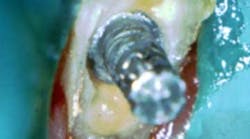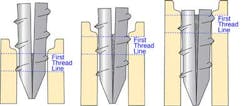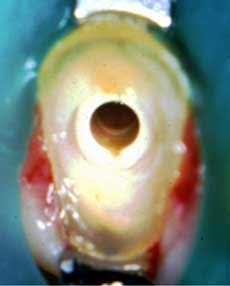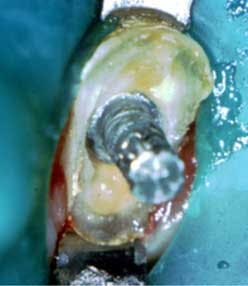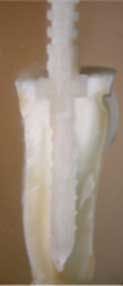Endodontic insight: 4 restoration selections for success after root canal treatment
This article first appeared in the newsletter, DE's Breakthrough Clinical with Stacey Simmons, DDS. Subscribe here.
To ensure maximum strength during the endodontic procedure, it is important to remove as little tooth structure as possible while obtaining proper cleaning, shaping, and sealing of the root canal system. In doing so, I have segmented the dental restoration selection into four categories:
Post placement is not needed—Posts are placed to provide a retentive, stable substructure for crowns. In cases where a crown is not needed, such as root canal access on the lingual surface of a central incisor with intact tooth structure, a universal dental composite may be used in the final restoration step.
ALSO BY DR. ALLAN DEUTSCH |Endodontic insight: Where should the gutta-percha point end for optimal endodontic success?
Post placement with some coronal tooth structure—Although there may be coronal tooth structure remaining, it’s important not to rely on the remaining dentin as it may be undermined from the access opening. The smaller the amount of remaining dentin, the weaker the prepared crown. To maximize the longevity of the endodontically treated tooth, the post must be designed with optimum support. Antiquated cast posts relied solely on cementation to dentin and are typically wedge-shaped in design. These properties, under function, can cause a great deal of stress and possibly fracture the root. In cases with some coronal dentin, I recommend using a prefabricated post. Factors that influence my post selection are:
- High post retention
- Low insertional stress
- Even distribution of functional stresses
- Highly resistant to cyclic fatigue
Post retention can be achieved by two means: chemical (solely relying on cement retention) or mechanical (threads placed the post). Studies have shown mechanical retention to be far superior to chemical. (1) While most threaded posts provide high mechanical retention, they also provide undesirable high insertional and functional stress. (2) One post that circumvents these problems is the Flexi-Post (Essential Dental Systems). Although threaded, the threads are placed on a split-shank, which acts as a graduated tap during insertion (figure 1).
The split design absorbs and reduces the stress of insertion. The post also has a multiple-tier design to increase the intimacy of fit between the post and the natural point at which the canal widens, thereby increasing the stability of the post by preventing the breakdown of cement, greatly enhancing long-term retention. In combination, these two design features provide even distribution of functional stress and cyclic fatigue resistance.
ADDITIONAL READING |The myth of 'easy' root canals in endodontics
Post placement with little or no coronal tooth structure—Based on the above considerations, I recommend a post with a wider coronal area, or flange, in cases with little or no coronal tooth structure. The flange offers fatigue resistance and retention when little dentin exists. Figure 2 shows the countersink preparation in a root with no coronal dentin. This preparation ensures the greatest possible stability in this clinical situation. Upon post placement, it is critical that the post is fully seated into the countersink preparation (figure 3).
Post placement with esthetic considerations—In clinical situations whereby esthetics are a primary concern, I recommend two possibilities. The first is to use an opaqueing agent to mask the metal post (figure 4). The second is to place an active fiber post (figure 5). The cross-sectional photograph of Figure 5 shows the intimate adaptation of the post within the root. Note the esthetic color match of the post to dentin, mechanical retention of threads, and flange placement at the natural anatomical widening of the root canal.
Once post placement is complete, a core material is placed around the head of the post. I find using plastic core forms for placement creates fewer voids than syringing core material around the post head. Upon light curing and shaping of the core, the next consideration is which luting cement to use when placing the crown.
ADDITIONAL READING | Endodontic insight: Thorough root canal cleaning and shaping while preserving tooth structure
Traditionally, resin cements would be used for this process. This would require the dentist to treat the tooth surface with 36% phosphoric acid and apply a bonding agent. Happily, the newest generation of luting cements are self-adhesive/self-etch resin cements. These cements do not require pretreatment of the tooth, which makes them less techinque sensitive for the clinican.
This article first appeared in the newsletter, DE's Breakthrough Clinical with Stacey Simmons, DDS. Subscribe here.
References
1. Cohen BI, Pagnillo MK, Musikant BL, Deutsch AS. Comparison of the retentive and photoelastic properties of two prefabricated endodontic post systems. J Oral Rehabilit. 1999;26:488–494.
2. Ross RS, Nicholls JI, Harrington GW. A comparison of strains generated during placement of five endodontic posts.Journal of Endodontics. 1991;17(9):450–456.
